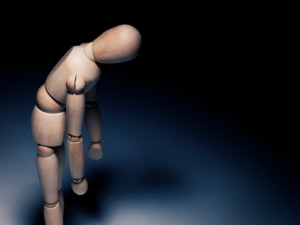There Is Help for Those with Bi-Polar Disorder: What Is It and How Do You Diagnose It?
By Guest Writer | May 1st, 2010 | Category: Articles, Mental Health | 2 commentsMany people suffer from bi-polar disorder, and unfortunately it is oftentimes undiagnosed. Some people suffer for years before they finally get the correct help, while some never get help at all and end up suicidal. When it is diagnosed, it takes specific medication modification to help at the appropriate times, as well as counseling.
 So what is bi-polar disorder? It is also known as a “manic-depressive” condition and causes a person to be severely depressed at times and extremely euphoric at others. Both men and women can suffer from bi-polar disorder, and it can hit at any age; but many people seem to start noticing the symptoms in their twenties, although teens have been diagnosed as well. It also appears that approximately 85% of people suffering from bi-polar have a family history of depression.
So what is bi-polar disorder? It is also known as a “manic-depressive” condition and causes a person to be severely depressed at times and extremely euphoric at others. Both men and women can suffer from bi-polar disorder, and it can hit at any age; but many people seem to start noticing the symptoms in their twenties, although teens have been diagnosed as well. It also appears that approximately 85% of people suffering from bi-polar have a family history of depression.
Health experts classify bi-polar disorder into four types: Bi-polar Affective Disorder 1, Bi-polar Affective Disorder 2, Cyclothymic Disorder, and Bi-polar Affective Disorder, not otherwise specified.
• Bi-polar Disorder Type 1 is when full blown mania occurs. Bi-polar 1 deals with the manic episodes associated with bi-polar. A person with Bi-polar 1 is extremely restless and energetic and has trouble sleeping, as the mind wanders nonstop. Such people appear to talk a lot more than usual. Sometimes they can even hallucinate and in some cases are even thought to be “psychotic.” In the extreme cases of Bi-polar 1, a person may even have to be confined.
• Bi-polar Disorder 2 is sometimes referred to as “swinging Bi-polar.” A person diagnosed with Bi-polar 2 can experience at least one depressive episode and one manic episode. Unlike Bi-polar 1, those diagnosed with Bi-polar 2 aren’t known to have psychotic episodes. They can, however, suffer badly from depression; and sometimes this depression will come crashing down on them all at once from loss of a loved one, job, relationship, etc., and it will be very hard for them to cope.
• Cyclothymic Disorder is when a person has a period of mania and depression but not to a major extent. Their manic and depressive episodes can go back and forth over a period of time, but not enough to meet the full criteria of major depression. Those diagnosed with Cyclothymic Disorder do have trouble functioning at times.
• Bi-polar Disorder – NOS is a person who experiences some characteristics of Bi-polar, but none of which can be classified as one of the three other types. Studies have shown that a person with Bi-polar Disorder – NOS will most likely go for help during a depressive episode. It is very important that the doctor or therapist obtain information about the family history. If the patient’s family has a history of depression and mania both, then there’s a chance that depression isn’t the only thing the patient has to worry about. If the patient is only given anti-depressants to help with his or her depression, then he or she can quickly switch to mania.
Thankfully, there is help and treatment for those who have any type of bi-polar disorder. There are skilled doctors and therapists who can recognize the symptoms early on and give patients the help and support needed. While there is no cure, there is good treatment out there. If you think that you or someone you know may have bi-polar disorder, support and treatment are available. You don’t have to live in fear or worry; you CAN get the help you need.
By Brenda Williams (isnare)








Thank you for this purpose – it can be amazing
Great start on discussion of a very serious and worthwhile topic. The online community can play a key role in supporting and informing those affected by clinical depressive conditions.